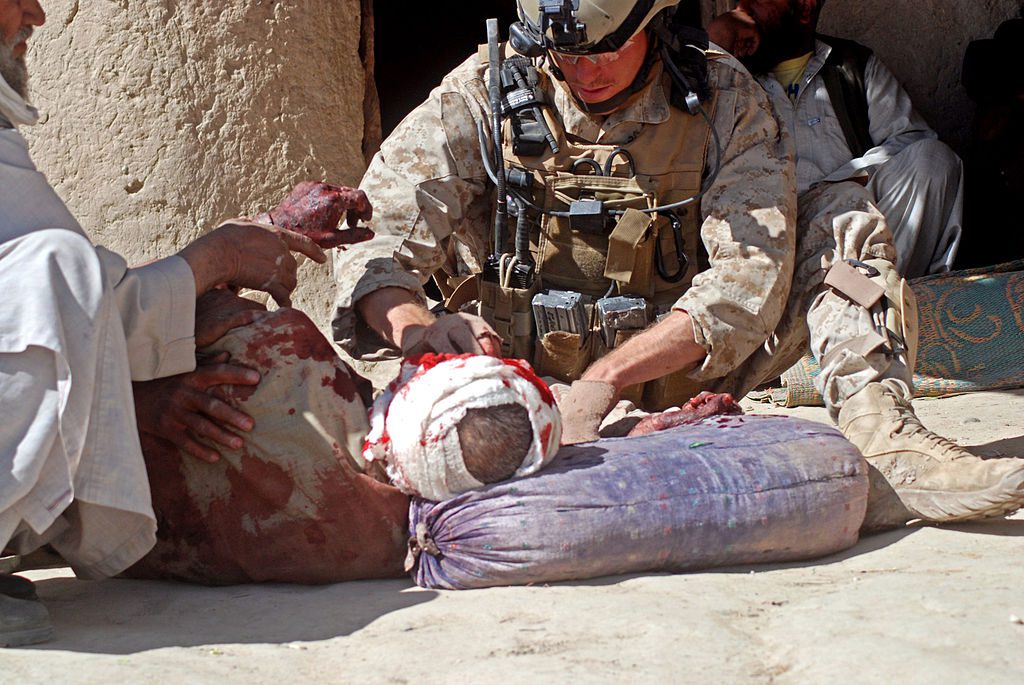Take a Whiff of Failure: More Heroin, Attacks, and Hunger in Afghanistan

The people who argue the hardest for staying in Afghanistan forever like to intimate that progress is incremental and that real success is just around the corner—if we have the fortitude and patience to stay.
They typically use metrics to prove the point. But looking at the most recent quarterly figures from the Special Inspector General for Afghanistan, the only truth teller in the whole of our government (and least popular bureaucrat), you can probably surmise that after 18 years that line is as old and useless as the war itself.
Come on people, it’s not getting any better.
Just a taste:
—There were 8,204 enemy attacks (including Taliban, ISIS, whoever is there now) between October and December 2019. Some 37 percent were lethal. This represents the highest number of any same period since SIGAR began recording in 2010. Translation: our presence is doing squat to tamp down violence, if anything it fuels it. Take note, most of the violence was due to the presidential election, indicating that after all of this time, the country still doesn’t have secure elections. Also, this comes after the U.S. dropped more bombs on Afghanistan in 2019 than anytime since 2010.
How do these metrics bode for President Trump giving the military “total authorization” without interference to use force against the enemy? It’s two years since he made that speech. Mr. President — where’s the beef?
—Heroin, which funds the global black market for terrorists and cartels—is not only Afghanistan’s biggest export, it is pretty much it’s only export today. According to SIGAR, the “overall value of opiates available for export in Afghanistan in 2018 (between $1.1 billion and $2.1 billion) was much larger than the combined value of all of the country’s licit exports ($875 million).”
According to the Washington Post’s Afghanistan Papers in December, the poppy trade has “skyrocketed” since the 2001 invasion, even though the U.S. and its coalition partners has spent billions trying to stop it.
So now Afghanistan supplies 90 percent of the world’s heroine, devastating our American communities. Most of the revenues, which before 2001 went to the poppy farmers, now go to corrupt government officials, warlords and terrorists. Bravo.
—The Afghan security forces, which the U.S. had poured billions into training and managing, is still floundering. According to SIGAR, they conducted fewer ground operations (534) between October and December than any other quarter in 2019. Only 31 percent of those missions were carried out independently, without U.S. or Coalition support. Less than half of any of their operations in all of 2019 were independent, fewer even than the year before. They cannot do the job without us after 18 years.
—But the money sure is getting spent. According to SIGAR, for the first time, DoD reported that the amount of funds appropriated for Operation Enduring Freedom and Operation Freedom’s Sentinel in Afghanistan ($776 billion, as of September 30, 2019), surpassed the amount ($771 billion) obligated for the U.S. missions begun in Iraq in 2003, Operation New Dawn and Operation Inherent Resolve. What a record.
—Meanwhile 11.3 million Afghanistans (more than a third of the country) are going hungry, and the numbers of polio cases are rising (28 cases in 2019) up year over year since 2017.
But a ray of hope: 64 percent of Afghan respondents believe that reconciliation between the government in Kabul and the Taliban is necessary–up from 53 percent in 2017. This must reflect a desire, at some level, to see the failed American enterprise go. Is anyone in Washington listening?
Comments